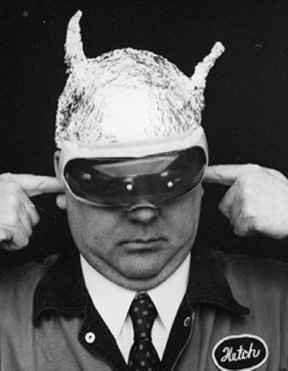 Conspiracy Theories Part One: "What the Government/Nasa/A Baffling Network of Unlikely Cohorts United only in their Compulsive Desire to Mislead You Don't Want You to Know"
Conspiracy Theories Part One: "What the Government/Nasa/A Baffling Network of Unlikely Cohorts United only in their Compulsive Desire to Mislead You Don't Want You to Know"Conspiracy theories are marvelous things. By marvelous, I mean entertaining, bizarre, and often devoid of any link to what we in the Biz call reality. Unconstrained by things like evidence, logic, or reason, they are able to grow in spite of all contrary data. In a perfect world, a conspiracy theory's lifespan would be brief and brutal.
Step 1) Hypothesis is presented
The only reason the government refuses to address the shadow people dilemma is that our government ARE shadow people!
Step 2) Data is checked
Is there even a shadow person dilemma? No. Wait, what is a shadow person? Are you just making things up?
Step 3) Hypothesis terminated with extreme prejudice.
Sadly, in the real world, with its pundits, cable news stations, late night radio hosts and an internet absolutely bursting with literally anything anyone wants to say about anything, this sort of claim can grow exponentially as time passes. Every news cycle represents another chance to fill 30 seconds of empty air time with a passing mention of "the shadow person agenda"or the "neocon denial of a shadow revolution." This in no way represents proof or data, but conspiracy theories don't need those to survive--they only need continued exposure.
The proponents of conspiracy theories often use what appear to be evidence-based methods to establish their points. In class, we have been covering various forms of fallacious argument. Fallacies are the food, water, and sunlight of conspiracy theories.
(to be continued)




No comments:
Post a Comment